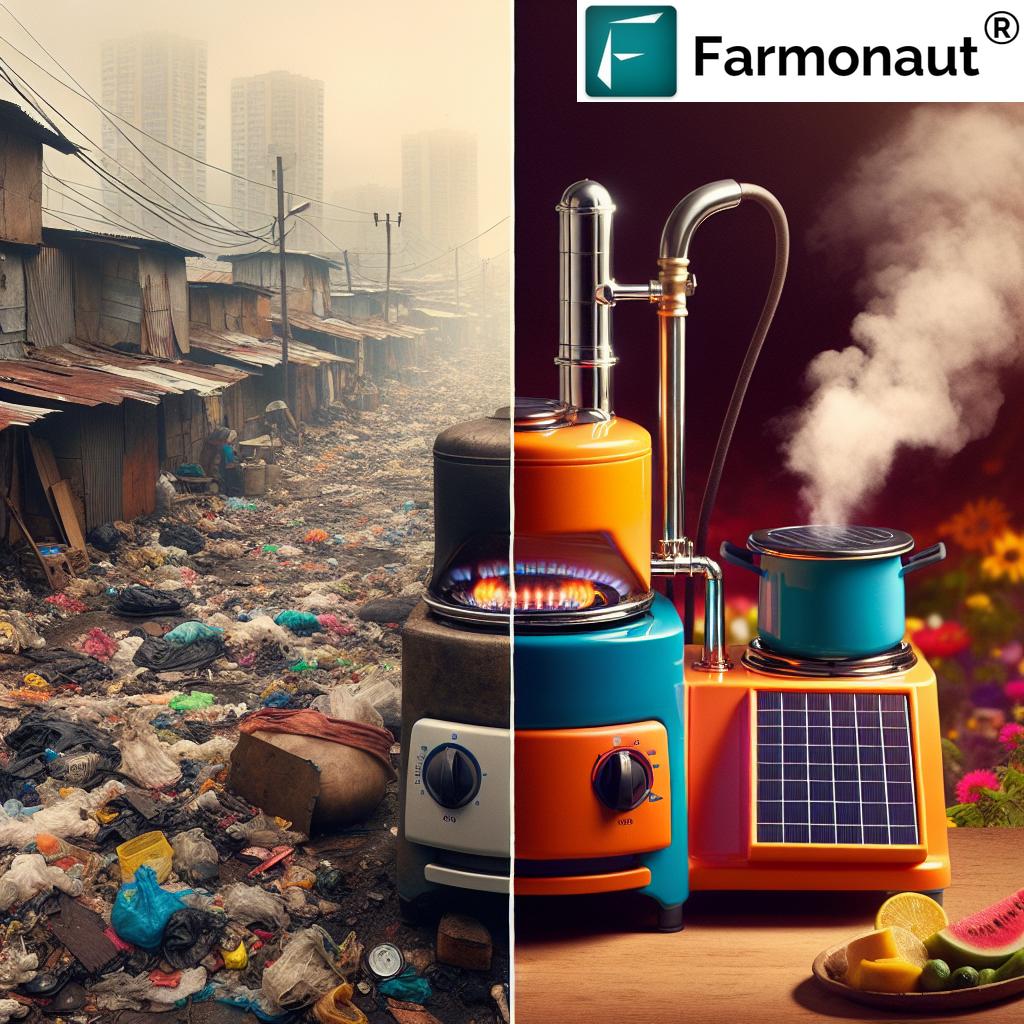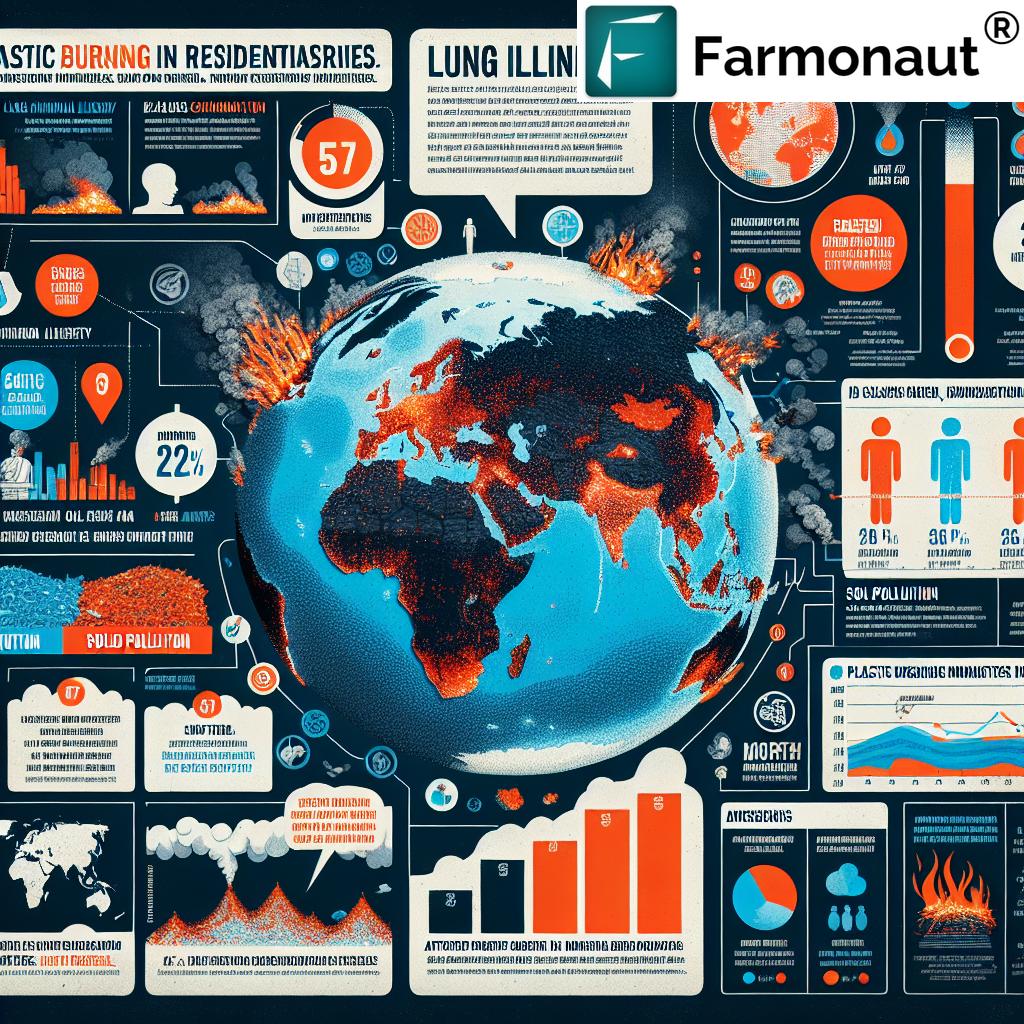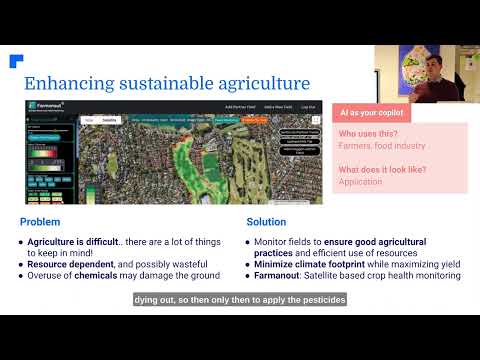Urgent: Health Risks of Burning Plastic for Cooking in Developing Nations – Sydney Study Reveals Alarming Trends

“By 2060, plastic consumption is expected to triple, exacerbating the issue of plastic burning for fuel in developing nations.”
In an alarming revelation, a recent study from Sydney has shed light on a growing crisis in developing nations across Africa, Asia, and Latin America. The research, conducted by experts at Curtin University in Western Australia, has uncovered a dangerous trend: millions of urban households are resorting to burning plastic waste for cooking and heating. This practice, driven by energy poverty and the scarcity of traditional fuel sources, poses severe health risks and environmental challenges that demand urgent attention from the global community.
As we delve into this critical issue, we’ll explore the complex factors contributing to this dangerous practice, its devastating impacts on human health and the environment, and potential solutions to address this urgent problem. Our comprehensive analysis will draw from the latest research findings and expert insights to provide a thorough understanding of the situation and its implications for global sustainability and public health.
The Growing Crisis: Plastic as Cooking Fuel in Developing Countries
The study from Curtin University has revealed a startling reality: in many urban areas of developing nations, plastic waste has become an all-too-common substitute for traditional cooking fuels. This trend is particularly prevalent in Africa, Asia, and Latin America, where rapid urbanization and energy poverty have created a perfect storm of circumstances leading to this dangerous practice.
Key factors driving this trend include:
- Lack of access to clean, affordable energy sources
- Rapid urbanization and the growth of informal settlements
- Increasing availability of plastic waste in urban areas
- Rising costs of traditional fuels like wood and charcoal
Lead researcher Bishal Bharadwaj from the Curtin Institute for Energy Transition (CIET) emphasized the gravity of the situation, stating, “Burning plastic releases harmful chemicals such as dioxins, furans, and heavy metals into the air, which can have a range of health and welfare impacts such as lung diseases.”
The research team’s findings paint a grim picture of the extent of this practice. In Nigeria, for example, a survey revealed that 13% of households reported using garbage, including plastic waste, as cooking fuel. This statistic is likely to be echoed or even surpassed in other developing nations facing similar challenges.
Health Risks of Burning Plastic: A Looming Public Health Crisis
The health implications of burning plastic for cooking and heating are severe and far-reaching. When plastic is burned, it releases a cocktail of toxic chemicals into the air, posing significant risks to human health. These risks are particularly pronounced in densely populated urban areas where the practice is most common.
Some of the most serious health risks associated with burning plastic include:
- Respiratory diseases, including asthma and chronic obstructive pulmonary disease (COPD)
- Cardiovascular problems
- Increased risk of cancer, particularly lung and throat cancers
- Reproductive health issues
- Developmental problems in children
The study highlights that women and children are particularly vulnerable to these health risks, as they typically spend more time at home and are thus exposed to the toxic fumes for longer periods. This gender disparity in exposure adds another layer of complexity to the issue, intersecting with broader concerns about gender equality and public health in developing nations.
To illustrate the severity of this issue, let’s consider a comparative table of the health and environmental impacts of burning plastic for cooking:
| Impact Category | Health Effects | Environmental Consequences |
|---|---|---|
| Respiratory Issues | Estimated 30% increase in lung diseases | Release of particulate matter, increasing local air pollution by an estimated 40% |
| Cardiovascular Problems | Potential 20% rise in heart-related ailments | Contribution to smog formation, reducing air quality by up to 35% |
| Air Pollution | Increased risk of cancer and respiratory infections by 25% | Release of greenhouse gases, contributing to climate change by an estimated 5% in affected areas |
| Soil Contamination | Potential increase in food chain toxicity by 15% | Soil degradation affecting crop yields by up to 10% |
| Water Pollution | Estimated 10% increase in waterborne diseases | Contamination of water sources, affecting aquatic life in up to 20% of local water bodies |
This table clearly illustrates the multifaceted impact of burning plastic, affecting not only human health but also the broader environment. The cumulative effect of these impacts creates a cycle of environmental degradation and health deterioration that can be challenging to break without targeted interventions.
Environmental Impact of Burning Plastic Waste
Beyond the immediate health risks, the practice of burning plastic for fuel has severe environmental consequences. The toxic emissions released during the burning process contribute significantly to air pollution, exacerbating existing environmental challenges in urban areas of developing nations.
Key environmental impacts include:
- Air pollution: Release of harmful pollutants, including particulate matter, dioxins, and furans
- Soil contamination: Deposition of toxic chemicals in soil, affecting agriculture and ecosystems
- Water pollution: Runoff of contaminated soil into water sources, impacting aquatic life and water quality
- Contribution to climate change: Release of greenhouse gases, including carbon dioxide and black carbon
The study from Curtin University also revealed alarming findings from Indonesia, where analysis of soil and food samples showed dangerous levels of toxins linked to burning plastic. This evidence underscores the far-reaching environmental consequences of this practice, extending beyond immediate air pollution to affect the entire ecosystem.

“Millions of urban households in Africa, Asia, and Latin America are resorting to burning plastic waste for cooking and heating.”
The Scale of the Problem: Urban Areas and Plastic Consumption
The scale of this crisis is set to escalate dramatically in the coming decades. The study warns that this will become a “growing problem” due to two key factors:
- Urbanization: By 2050, it’s projected that two-thirds of the global population will live in urban areas.
- Plastic consumption: Global plastic consumption is expected to triple by 2060.
These trends paint a worrying picture for the future, particularly in developing nations where urban infrastructure and waste management systems are often ill-equipped to handle the increasing volume of plastic waste. The concentration of this issue in neglected areas such as slums further complicates efforts to address the problem, as noted by Peta Ashworth, director of the CIET.
To tackle this growing crisis effectively, we need to understand the complex interplay of factors driving this dangerous practice and explore comprehensive solutions that address both the immediate health risks and the underlying socio-economic issues.
Addressing the Crisis: Potential Solutions and Strategies
Tackling the issue of plastic burning for fuel in developing nations requires a multifaceted approach that addresses both the immediate health risks and the underlying causes of the practice. The researchers from Curtin University have suggested several potential strategies to combat this growing problem:
1. Clean Fuel Subsidies for Low-Income Families
One of the most direct ways to address the issue is by making clean, alternative fuels more accessible and affordable for low-income households. This could involve:
- Government subsidies for clean cooking fuels like LPG or natural gas
- Incentives for the adoption of electric or solar-powered cooking appliances
- Community-based clean energy initiatives
By reducing the cost barrier to cleaner fuel options, we can provide viable alternatives to burning plastic and other harmful materials.
2. Improved Urban Waste Management Solutions
Addressing the abundance of plastic waste in urban areas is crucial to preventing its use as fuel. This involves:
- Enhancing waste collection and recycling infrastructure in urban areas, particularly in informal settlements
- Implementing waste segregation programs to facilitate recycling and proper disposal
- Encouraging the use of biodegradable alternatives to plastic
Effective waste management not only reduces the availability of plastic waste for burning but also creates cleaner, healthier urban environments.
3. Education Campaigns on Plastic Burning Dangers
Raising awareness about the health risks and environmental impact of burning plastic is essential. Education campaigns should focus on:
- Informing communities about the toxic emissions produced by burning plastic
- Promoting alternative cooking and heating methods
- Engaging local leaders and community organizations in spreading awareness
These campaigns can help change behaviors and create community-driven solutions to the problem.
4. Alternative Energy Sources for Urban Poor
Developing and promoting alternative energy sources that are both clean and affordable is crucial. This could include:
- Investing in renewable energy infrastructure in urban areas
- Supporting the development of small-scale, community-based energy solutions
- Providing microfinance options for households to invest in clean energy technologies
By diversifying energy options, we can reduce reliance on harmful fuels like plastic waste.
The Role of Technology and Innovation
In addressing the complex challenges posed by the burning of plastic for fuel, technology and innovation play a crucial role. Advanced solutions can help monitor, manage, and mitigate the impacts of this dangerous practice. One such innovative platform making strides in environmental monitoring and agricultural sustainability is Farmonaut.
While Farmonaut’s primary focus is on agricultural technology, its satellite-based monitoring systems and data analysis capabilities have broader applications that could potentially contribute to addressing environmental challenges like plastic burning. Here’s how technology like Farmonaut’s could be adapted to help tackle this issue:
- Satellite Monitoring: Farmonaut’s expertise in satellite imagery could be applied to monitor air quality and detect areas where plastic burning is prevalent, helping authorities target interventions more effectively.
- Data Analytics: The platform’s advanced data analysis capabilities could be used to process environmental data, providing insights into the scale and impact of plastic burning in different regions.
- AI-Driven Solutions: Farmonaut’s AI advisory system could potentially be adapted to provide recommendations for sustainable waste management practices in urban areas.
While Farmonaut itself is not directly involved in addressing the issue of plastic burning for fuel, its technological approach exemplifies the kind of innovative thinking needed to tackle complex environmental challenges. For more information on Farmonaut’s agricultural solutions, you can visit their web app or explore their API for developers.
Global Collaboration and Policy Interventions
Addressing the issue of plastic burning for fuel requires not only local and national efforts but also global collaboration and policy interventions. The transboundary nature of air pollution and the global scale of plastic production and consumption necessitate a coordinated international response.
Key areas for global collaboration include:
- International agreements on plastic waste management and reduction
- Technology transfer to support clean energy adoption in developing nations
- Global research initiatives to study the impacts of plastic burning and develop solutions
- Coordinated efforts to improve urban air quality monitoring and management
Policy interventions at both national and international levels are crucial to creating an enabling environment for change. These may include:
- Stricter regulations on plastic production and disposal
- Incentives for clean energy adoption and sustainable waste management practices
- Integration of air quality considerations into urban planning and development policies
- Support for research and development of alternative materials and energy sources
The Way Forward: A Call to Action
The findings of the Sydney study serve as a wake-up call to the global community. The practice of burning plastic for cooking and heating in developing nations is not just a local issue but a global crisis that demands immediate attention and concerted action.
As we move forward, it’s crucial that we:
- Prioritize clean energy access for urban poor communities
- Invest in sustainable urban infrastructure and waste management systems
- Support research and innovation in clean cooking technologies
- Strengthen international cooperation on plastic waste reduction and management
- Empower local communities through education and resources to adopt safer practices
By addressing this issue, we not only protect the health of millions of people but also contribute to broader goals of environmental sustainability and climate change mitigation. The time for action is now – every day that passes without addressing this crisis puts more lives at risk and further damages our shared environment.
Conclusion
The alarming trend of burning plastic for cooking and heating in developing nations represents a critical intersection of public health, environmental sustainability, and social equity issues. The Sydney study has shed light on a problem that has been overlooked for too long, highlighting the urgent need for comprehensive solutions.
As we’ve explored in this article, addressing this crisis requires a multifaceted approach involving clean fuel subsidies, improved waste management, education campaigns, and the development of alternative energy sources. It also calls for global collaboration, innovative technological solutions, and strong policy interventions.
The health risks and environmental impacts of burning plastic are too severe to ignore. As a global community, we must come together to support developing nations in transitioning to cleaner, safer energy sources and more sustainable waste management practices. Only through collective action can we hope to protect the health of millions and safeguard our planet for future generations.
FAQ Section
1. Why are people burning plastic for cooking in developing countries?
People in developing countries often resort to burning plastic for cooking due to a lack of access to affordable traditional fuels like wood or charcoal, especially in urban areas. The abundance of plastic waste and the high cost of cleaner fuels make plastic an accessible, albeit dangerous, alternative.
2. What are the main health risks associated with burning plastic for cooking?
The main health risks include respiratory diseases such as asthma and lung cancer, cardiovascular problems, and developmental issues in children. The toxic fumes released when burning plastic contain harmful chemicals like dioxins and heavy metals that can cause serious long-term health problems.
3. How does burning plastic impact the environment?
Burning plastic releases toxic pollutants into the air, contributing to air pollution and climate change. It also leads to soil and water contamination as toxic residues settle on the ground and in water sources, affecting ecosystems and food chains.
4. What solutions are being proposed to address this issue?
Proposed solutions include subsidizing clean cooking fuels, improving urban waste management, conducting education campaigns about the dangers of burning plastic, developing alternative energy sources for urban poor communities, and implementing stricter regulations on plastic production and disposal.
5. How can individuals contribute to solving this problem?
Individuals can contribute by reducing their plastic consumption, supporting organizations working on clean energy access in developing countries, advocating for better waste management policies, and raising awareness about the dangers of burning plastic for fuel.







